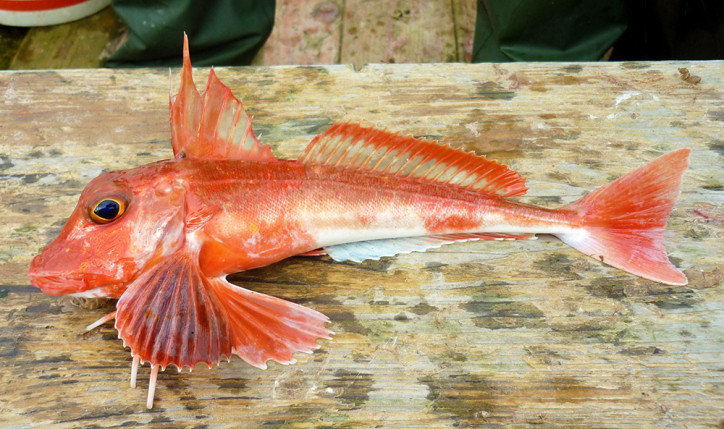Fish of the Chelidonichthys (smallscaled gurnards) genus of the Triglidae (sea robins or gurnards) family of the suborder Scorpaenoidei of the Scorpaeniformes order of the Acanthopterygii superorder.

(Red gurnard. Photo by © nightfly. ispotnature.org)
Red gurnard (Chelidonichthys cuculus) was first described in 1758 by the Swedish naturalist Carl Linnaeus (1707-1778).
It inhabits the depth of 15-400 meters, usually 30-250 meters. It prefers to swim close to the sandy, pebbly and rocky bottom. Sometimes it arranges schools. The maximum recorded length is 50 cm. Specimens about 20 cm long are more common. They feed on bottom crustaceans and other invertebrates, small fish.

(Red gurnard. Photo by © Henk Heessen. marinespecies.org)
It is a permanent inhabitant of the Adriatic Sea.
When it’s taken out of the water, it makes sounds resembling grunts.
Names of red gurnard (Chelidonichthys cuculus) in other languages as follows:
Peshku gjel-dallëndyshë (Albanian), Engelse poon (Dutch), Ασπιδοκαπόνι (Aspidokaponi) (Greek), Arete (Spanish), Capone coccio (Italian), Seekuckuck (German), Kurek napłon (Polish), Cabra vermelha (Portuguese), Красный морской петух (Krasnyi morskoj petuh) (Russian), Kokot beli (Serbian, Croatian), Rdeči krulec (Slovenian), Dikenlikırlangıç (Turkish), Grondin rouge (French).